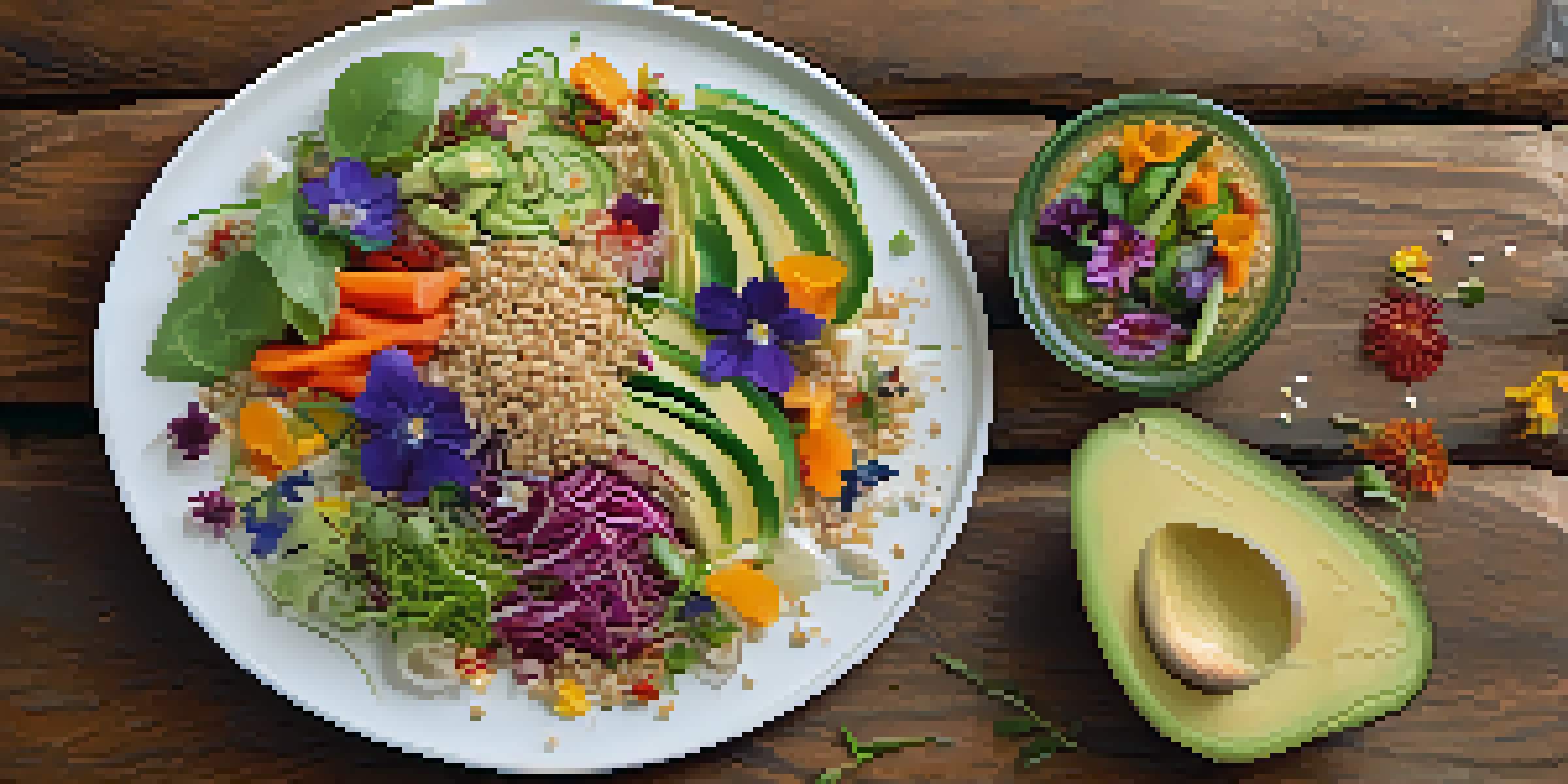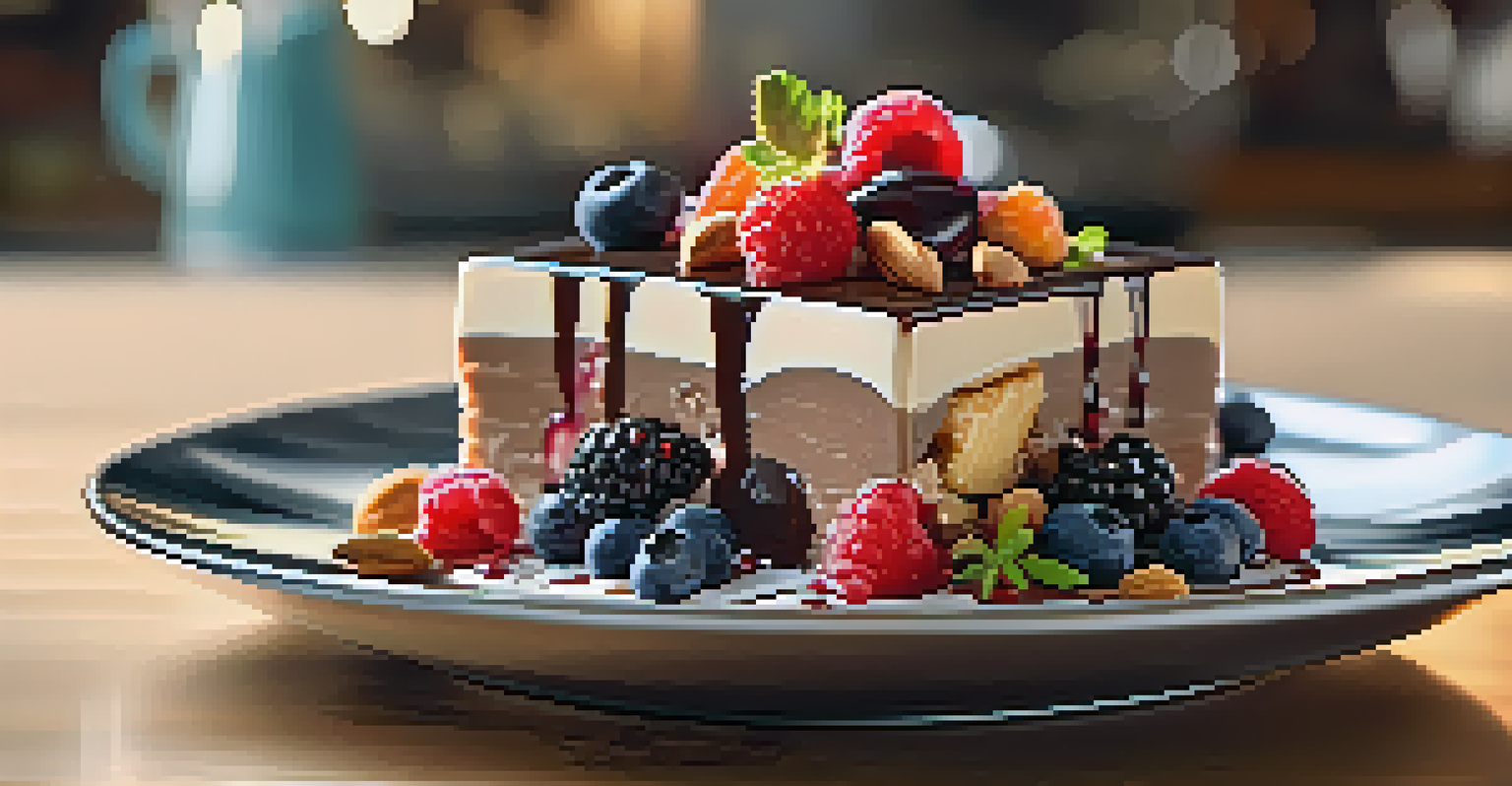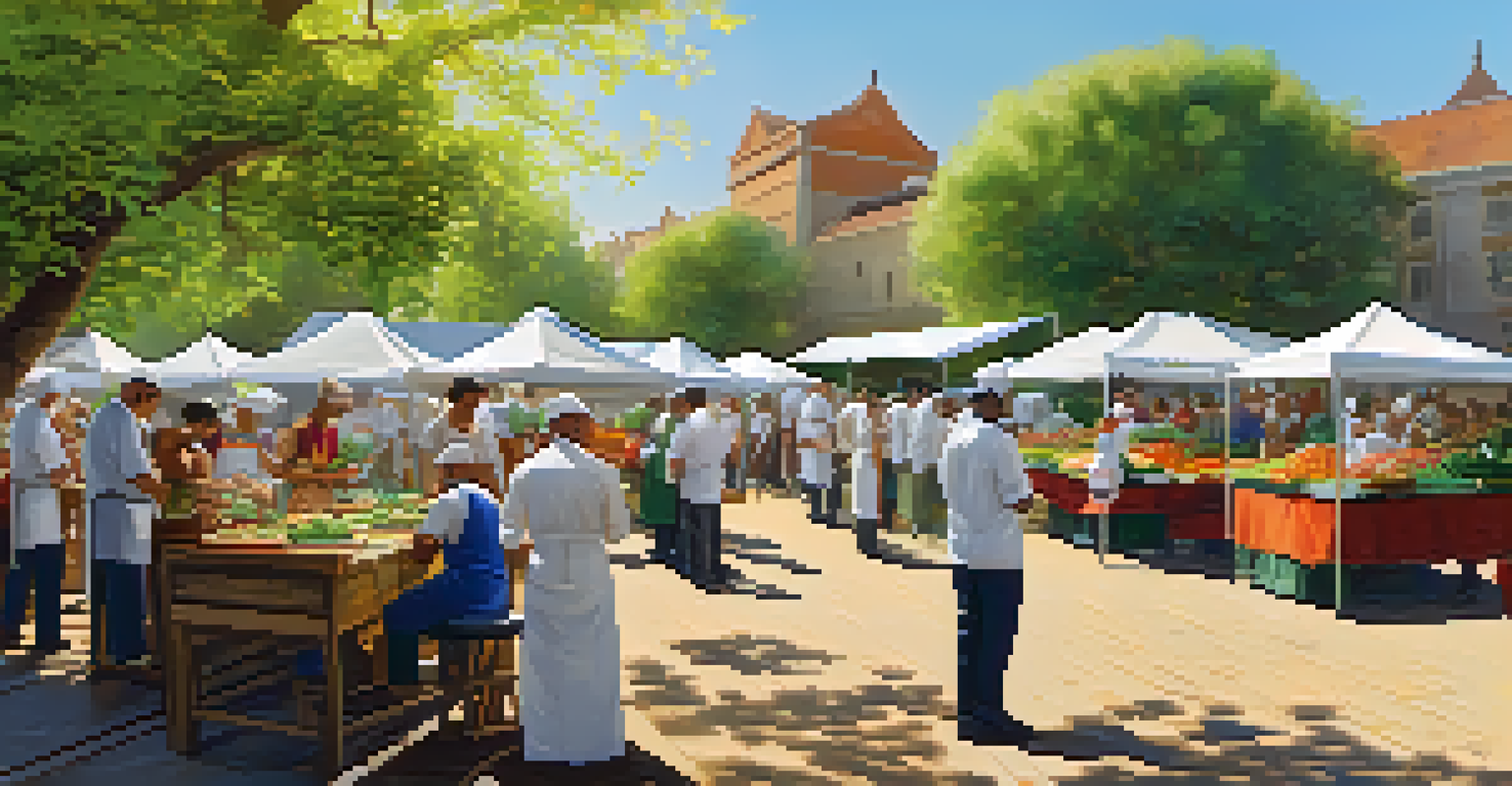Famous Raw Food Chefs Leading Culinary Competitions Today

The Rise of Raw Cuisine in Culinary Competitions
Raw cuisine has gained significant traction in the culinary world, with chefs pushing the boundaries of what can be created without cooking. This movement emphasizes fresh, unprocessed ingredients that retain their natural flavors and nutrients. In competitions, raw food presentations are not just about taste, but also about creativity and artistry.
Let food be thy medicine and medicine be thy food.
As more people adopt plant-based diets for health and environmental reasons, culinary competitions are adapting to showcase raw food creations. Chefs are experimenting with techniques like dehydration, fermentation, and sprouting to enhance flavors and textures. This shift allows them to stand out in a crowded field of traditional cooked dishes.
Ultimately, the rise of raw cuisine is challenging chefs to think outside the box and redefine culinary excellence. The creativity and innovation displayed in these competitions are inspiring a new generation of chefs to explore raw food options in their own kitchens.
Notable Raw Food Chefs Making Waves
Among the pioneers of raw cuisine, chefs like Matthew Kenney have become household names, known for their vibrant and delicious plant-based dishes. Kenney not only runs several raw food restaurants but also teaches culinary classes, spreading knowledge about this innovative cooking style. His approach combines gourmet techniques with the simplicity of raw ingredients, setting a high bar in culinary competitions.

Another influential figure is Chef Angela Liddon, the creator behind the popular Oh She Glows blog. Liddon has gained recognition for her accessible and wholesome recipes that highlight the beauty of raw foods. Her work showcases how raw cuisine can be both satisfying and nutritious, inspiring chefs to incorporate more raw elements into their competition dishes.
Raw Cuisine's Growing Popularity
Raw cuisine is gaining traction in culinary competitions as chefs creatively showcase fresh, unprocessed ingredients.
These chefs, among others, are not just competing; they're leading a movement that encourages creativity and healthy eating. Their success in competitions has helped elevate the status of raw cuisine within the culinary community, proving that raw dishes can compete with traditional cooking.
Innovative Techniques Raw Chefs Use
Raw food chefs utilize a variety of innovative techniques to enhance flavors and textures without cooking. Dehydration, for example, allows chefs to create crispy snacks and flavorful powders while retaining nutrients. This technique adds depth to dishes, making them more appealing in competitions.
The food you eat can either be the safest and most powerful form of medicine or the slowest form of poison.
Fermentation is another popular method, adding a tangy complexity to raw dishes. Chefs often use fermented ingredients like sauerkraut or kimchi to elevate their creations, showcasing their understanding of flavor profiles. This adds not only taste but also health benefits, attracting judges looking for nutritious options.
Sprouting grains and legumes is yet another technique that raw chefs employ to enhance their dishes. Sprouting increases nutrient availability and adds a satisfying crunch, making it a favorite choice in competitions. These methods demonstrate that raw food can be both innovative and delicious, captivating audiences and judges alike.
Challenges Raw Food Chefs Face in Competitions
While raw food competitions are exciting, they also come with their unique set of challenges. One major hurdle is the perception that raw dishes lack the complexity and depth of cooked foods. Chefs must work harder to prove that raw cuisine can be just as intricate and satisfying, often requiring more creativity and skill.
Another challenge is the time constraints often present in culinary competitions. Preparing raw dishes can be time-consuming, especially when it involves techniques like dehydration or fermentation. Chefs need to strategize effectively to ensure their dishes are both innovative and completed within the allotted time.
Innovative Techniques Flourish
Chefs are utilizing methods like dehydration and fermentation to enhance raw dishes, proving their complexity and appeal.
Finally, the availability of high-quality, fresh ingredients can pose a challenge, especially in certain locations or seasons. Raw food chefs must be resourceful, often sourcing ingredients from local farmers or adjusting recipes based on what's available. Overcoming these obstacles is crucial for success in the competitive culinary landscape.
How Raw Food Competitions Are Judged
Judging raw food competitions often involves a unique set of criteria that goes beyond taste. Judges consider presentation, creativity, and the use of ingredients, looking for dishes that not only taste great but also look visually appealing. The artful arrangement of colors and textures can make a significant impact on scores.
Another important factor is the health aspect of the dishes. Judges often evaluate the nutritional value of the ingredients used, favoring those that prioritize whole, unprocessed foods. This focus on health aligns with the growing interest in wellness and sustainable eating, making it a vital component of the judging process.
Finally, chefs are often scored on their storytelling ability. The narrative behind a dish, including the inspiration and the techniques used, can resonate with judges and elevate a dish from good to extraordinary. This holistic approach to judging raw food competitions sets them apart from traditional culinary contests.
The Impact of Social Media on Raw Food Chefs
Social media has revolutionized the way raw food chefs showcase their creations and connect with their audience. Platforms like Instagram and TikTok allow chefs to share visually stunning photos and videos of their dishes, attracting followers interested in healthy eating. This exposure can lead to increased opportunities in competitions and collaborations.
Moreover, social media has created a community where chefs can share tips, tricks, and recipes, fostering collaboration rather than competition. This supportive environment encourages chefs to experiment and innovate, ultimately benefiting their performances in competitions. The exchange of ideas can lead to groundbreaking dishes that impress judges and audiences alike.
Social Media's Role in Raw Cuisine
Social media is revolutionizing how raw food chefs connect with audiences, share creations, and promote competitions.
The influence of social media also extends to how competitions are promoted and engaged with the public. Chefs can build anticipation for their participation and share behind-the-scenes glimpses, making the events more relatable and exciting. This connection with the audience enhances the overall experience for both chefs and spectators.
Looking Ahead: The Future of Raw Food Competitions
As the demand for plant-based and health-conscious dining continues to rise, the future of raw food competitions looks promising. We can expect to see even more chefs entering the scene, bringing fresh perspectives and innovative ideas. This influx of talent will likely push the boundaries of raw cuisine to new heights.
In addition, as more culinary schools begin to incorporate raw food training into their programs, the skill level of new chefs will increase. This education will prepare them for success in competitions and help bridge the gap between traditional and raw culinary techniques. The blending of these styles could lead to exciting new culinary trends.

Ultimately, the future of raw food competitions will likely be marked by greater inclusivity and diversity. As chefs from different backgrounds and cultures contribute their unique flavors and techniques, the landscape of raw cuisine will continue to evolve, captivating audiences and judges alike.